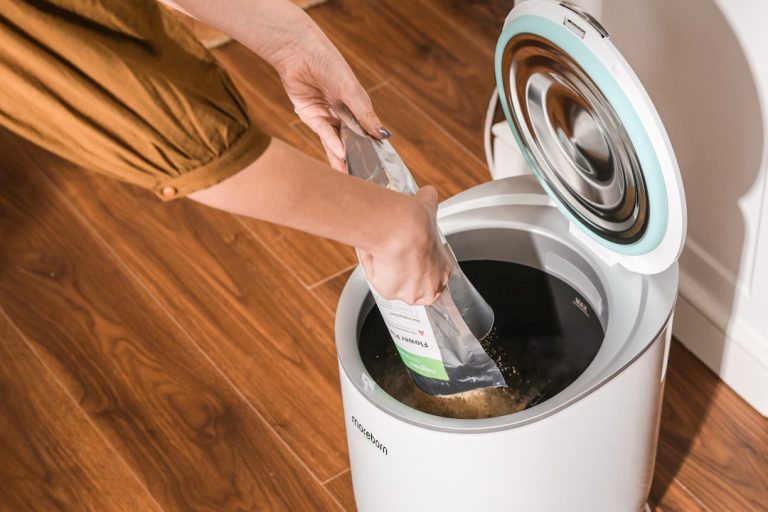The Impact of Fast Fashion on Waste (and How I Shop Responsibly).
The Impact of Fast Fashion on Waste (and How I Shop Responsibly)
We’ve all been there: scrolling through endless online sales, lured by trendy pieces at unbelievably low prices. It’s exciting, isn’t it? That immediate gratification of a new outfit for every occasion, a fresh style just because. This cycle, however, is the very heartbeat of fast fashion – a behemoth industry designed to churn out fleeting trends at breakneck speed. What many of us don’t always see, though, is the monumental cost behind these cheap thrills, particularly the devastating impact fast fashion has on waste. For years, I participated in this cycle, oblivious to the ecological footprint of my overflowing closet. But a growing awareness, coupled with a desire to live more consciously, led me down a path of discovery. This journey unveiled the uncomfortable truth about textile waste and ultimately reshaped how I approach my wardrobe, transforming me into a more responsible shopper.
The Unseen Mountains: How Fast Fashion Generates Astonishing Waste
Imagine a mountain range, not of rock and earth, but of discarded clothes. This isn’t a dystopian vision; it’s the harsh reality of fast fashion’s waste stream. The industry’s model relies on rapid production, low prices, and planned obsolescence, encouraging consumers to buy more and discard quickly. Trends come and go in weeks, not seasons, meaning clothes are often worn only a handful of times before being deemed “outdated” or falling apart due to poor quality. The sheer volume is staggering: reports indicate that globally, a truckload of textiles is landfilled or incinerated every single second. This isn’t just old t-shirts; it’s dresses, jeans, jackets – often still perfectly wearable – contributing to an ever-growing environmental crisis.
The Lifecycle of a Disposable Garment: From Factory to Landfill
Consider a typical fast fashion t-shirt. Its journey begins with resource-intensive raw materials like conventional cotton, which demands vast amounts of water and pesticides, or synthetic fibers like polyester, derived from fossil fuels. It’s then manufactured in factories often in developing countries, under conditions that frequently raise ethical concerns. After a brief stint in a store and a few wears in your closet, it’s discarded. Where does it go? A small percentage might be donated or recycled, but the vast majority ends up in landfills. Here, synthetic fabrics can take hundreds of years to decompose, releasing microplastics into the soil and water. Natural fibers, while biodegradable, often decompose anaerobically in landfills, producing methane – a potent greenhouse gas.
Beyond the Landfill: The Broader Environmental Scars of Disposable Clothing
While the visible piles of textile waste are shocking enough, fast fashion’s impact extends far beyond overflowing landfills. The entire supply chain is riddled with environmental damage, making it one of the most polluting industries globally. It’s a complex web of resource depletion, chemical pollution, and carbon emissions that affects ecosystems and communities worldwide. My personal awakening wasn’t just about the physical waste; it was about understanding the interconnectedness of these issues.
Water, Chemicals, and Carbon: The Invisible Footprint
The thirst of fast fashion is immense. Growing cotton, for instance, is incredibly water-intensive; it can take thousands of liters of water to produce just one cotton t-shirt. Dyeing and finishing processes further exacerbate this, often discharging toxic wastewater directly into rivers, contaminating ecosystems and threatening human health. Beyond water, the industry is a heavy user of hazardous chemicals, from dyes to bleaches, which not only pollute water but also pose risks to factory workers. Then there’s the carbon footprint: from the cultivation of raw materials to manufacturing, global shipping, and even the energy used in washing and drying clothes, fast fashion contributes significantly to greenhouse gas emissions, accelerating climate change. The microplastics shed by synthetic garments during washing cycles further compound the problem, entering our oceans and food chains, a silent but pervasive threat.
My Personal Turning Point: Why I Had to Rethink My Shopping Habits
For years, I was a quintessential fast fashion consumer. My wardrobe was a revolving door of trendy pieces, bought on impulse, worn briefly, and then relegated to the back of the closet or donated without a second thought. I loved the thrill of the hunt, the feeling of always having something new. The turning point wasn’t a sudden epiphany but a gradual accumulation of information. Documentaries, articles, and even conversations with friends started chipping away at my blissful ignorance. I began to see the true cost – not just in dollars, but in environmental degradation and human exploitation – behind those impossibly cheap garments. The idea that my desire for a new top every week was contributing to literal mountains of waste and polluting rivers halfway across the world felt deeply unsettling. It was clear I couldn’t continue this way; a change was necessary, not just for my conscience, but for the planet.

From Impulse Buys to Intentional Choices: A Mindset Shift
This realization sparked a fundamental shift in my mindset. It moved me from a consumer driven by fleeting desires to one focused on intentionality. I started questioning every potential purchase: Do I really need this? How many times will I wear it? What is it made of? Who made it? This internal dialogue became the foundation of my responsible shopping journey. It wasn’t about deprivation, but about finding joy in different aspects of clothing ownership – quality, longevity, and ethical production – rather than just novelty and quantity. It’s an ongoing process, but one that has brought a deeper sense of satisfaction and alignment with my values.
Embracing Durability and Thought: My Pillars for Responsible Wardrobe Building
My approach to responsible shopping isn’t about rigid rules, but about adopting core principles that guide my decisions. These pillars have helped me navigate the complexities of the fashion industry and build a wardrobe that I truly love, one piece at a time. They focus on making informed choices that prioritize longevity, ethical production, and environmental kindness over transient trends.
Prioritizing Quality Over Quantity (and Trendy Whims)
The first pillar is simple: buy less, choose well. Instead of accumulating numerous low-quality items that quickly fall apart, I invest in fewer, well-made pieces designed to last. This means scrutinizing fabric compositions, checking stitching, and opting for timeless styles over fleeting trends. While these items might have a higher upfront cost, their extended lifespan often makes them more economical in the long run, drastically reducing my need to replace them frequently. This approach also allows me to truly appreciate the craftsmanship and design of each garment, fostering a deeper connection with my clothes.
Supporting Ethical and Sustainable Brands
When I do buy new, I make a conscious effort to research and support brands committed to ethical labor practices and sustainable production methods. This often involves looking for certifications, transparent supply chains, and brands that use eco-friendly materials like organic cotton, linen, hemp, or recycled fabrics. It’s about aligning my purchasing power with companies that are actively working to minimize their environmental and social footprint. It requires a bit more effort than simply clicking “add to cart” on a fast fashion site, but the peace of mind knowing my money is supporting positive change is invaluable.
From Thrift Stores to Thoughtful Care: My Actionable Steps Against Fast Fashion Waste
Beyond the foundational principles, I’ve integrated several practical, actionable steps into my daily life that directly combat fast fashion waste. These aren’t grand gestures, but consistent habits that collectively make a significant difference in my personal consumption footprint.
Diving into the World of Secondhand and Vintage
My absolute favorite way to shop responsibly is by embracing secondhand. Thrift stores, consignment shops, online marketplaces, and vintage boutiques are treasure troves of unique, pre-loved garments. Not only does this significantly reduce demand for new production and divert clothes from landfills, but it also allows me to develop a truly individual style without breaking the bank. The thrill of finding a unique piece with a story, knowing it’s getting a second life, is far more satisfying than any fast fashion purchase. It’s a key strategy in my Understanding Sustainable Fashion journey.
Mending, Repairing, and Upcycling What I Already Own
A torn seam or a missing button used to mean a garment was destined for the discard pile. Now, it’s an opportunity. I’ve learned basic mending skills – sewing on buttons, patching small holes, even simple alterations. For items beyond my skill set, I seek out local tailors. This practice not only extends the life of my clothes but also fosters a sense of resourcefulness and appreciation for what I already possess. I’ve even dabbled in The Art of Upcycling Clothes, transforming old jeans into a tote bag or giving a dated dress a new lease on life with a simple dye job.
Thoughtful Laundry Practices and Garment Care
How we care for our clothes also plays a massive role in their longevity and environmental impact. I wash clothes less frequently, use cold water, and air dry whenever possible to reduce energy consumption. I also use laundry bags for synthetic items to minimize microplastic shedding. Proper storage, like folding knits instead of hanging them to prevent stretching, also contributes to keeping garments in good condition for longer. These small habits collectively prolong the life of each item and reduce its overall environmental footprint.
Cultivating a Conscious Closet: Looking Ahead with My Sustainable Choices
My journey toward responsible shopping is continuous, a learning process that evolves as new information emerges and my understanding deepens. It’s not about achieving perfection, but about making consistent, mindful choices that align with my values and contribute positively to the world. My closet is no longer a chaotic collection of impulse buys; it’s a curated space filled






